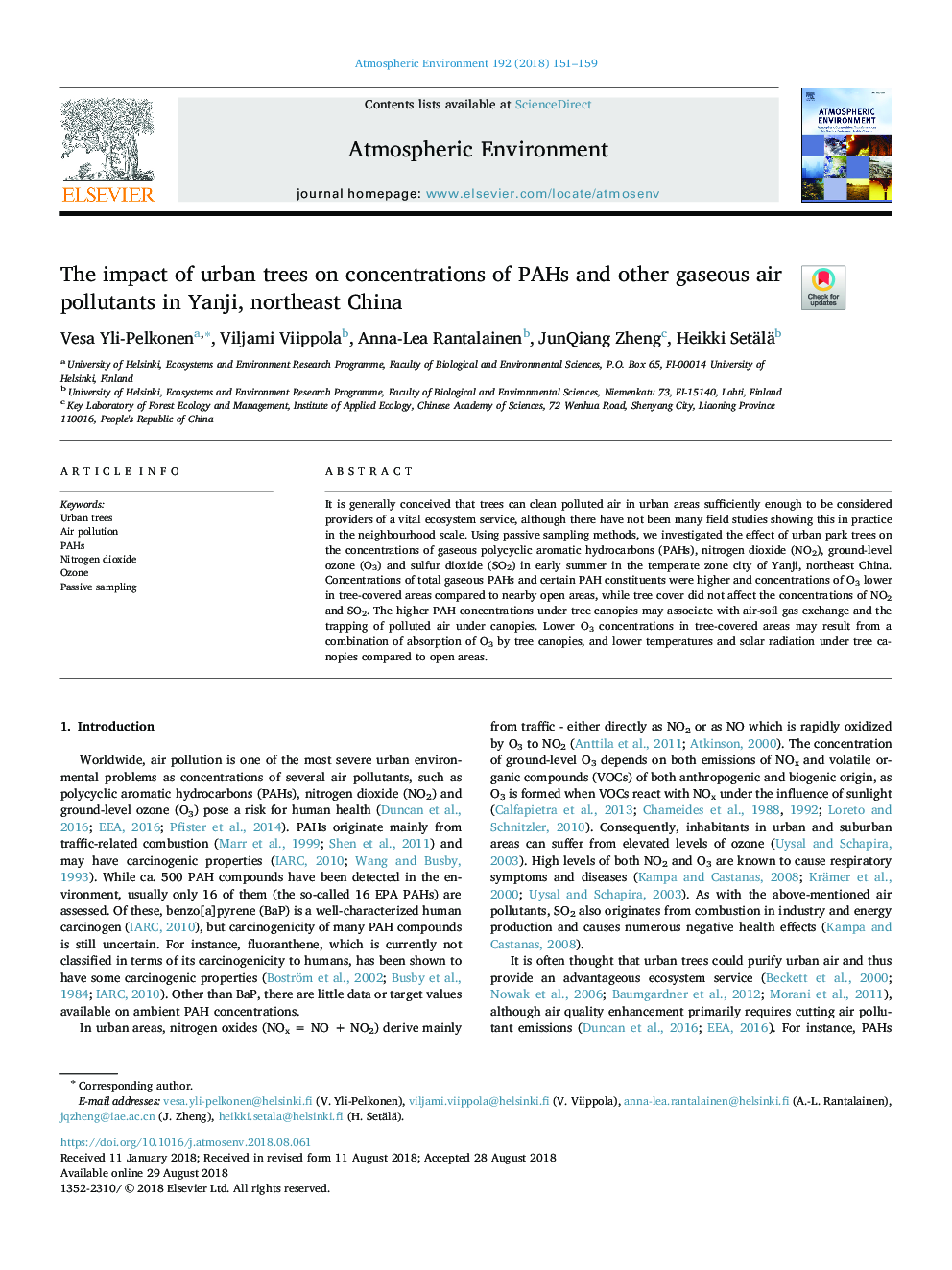| Article ID | Journal | Published Year | Pages | File Type |
|---|---|---|---|---|
| 10138613 | Atmospheric Environment | 2018 | 9 Pages |
Abstract
It is generally conceived that trees can clean polluted air in urban areas sufficiently enough to be considered providers of a vital ecosystem service, although there have not been many field studies showing this in practice in the neighbourhood scale. Using passive sampling methods, we investigated the effect of urban park trees on the concentrations of gaseous polycyclic aromatic hydrocarbons (PAHs), nitrogen dioxide (NO2), ground-level ozone (O3) and sulfur dioxide (SO2) in early summer in the temperate zone city of Yanji, northeast China. Concentrations of total gaseous PAHs and certain PAH constituents were higher and concentrations of O3 lower in tree-covered areas compared to nearby open areas, while tree cover did not affect the concentrations of NO2 and SO2. The higher PAH concentrations under tree canopies may associate with air-soil gas exchange and the trapping of polluted air under canopies. Lower O3 concentrations in tree-covered areas may result from a combination of absorption of O3 by tree canopies, and lower temperatures and solar radiation under tree canopies compared to open areas.
Related Topics
Physical Sciences and Engineering
Earth and Planetary Sciences
Atmospheric Science
Authors
Vesa Yli-Pelkonen, Viljami Viippola, Anna-Lea Rantalainen, JunQiang Zheng, Heikki Setälä,
